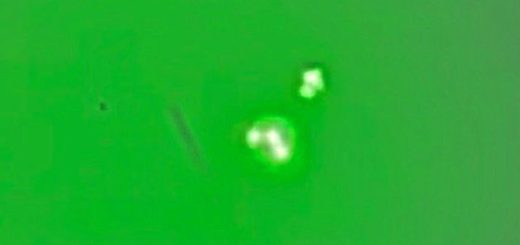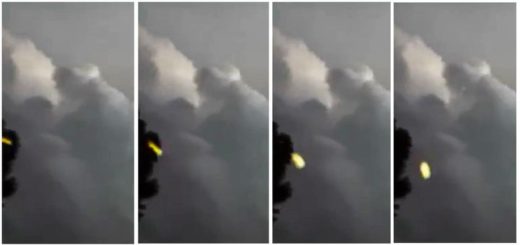Aliens? Harvard professor defends claim mysterious interstellar object could be extraterrestrial probe

A new study from the Harvard Smithsonian Center for Astrophysics says Oumuamua, the first interstellar object ever spotted in our solar system, could be ‘a lightsail of artificial origin’ sent from another civilization.
Harvard University Astronomy Department chair Avi Loeb is no stranger to controversy. His suggestion that a strange object spotted entering our solar system from deep space could be an alien probe is just the most recent example.
Now, he’s added fuel to the fire.
In an interview with the Israeli newspaper Haaretz, the Israeli professor has fiercely defended his hypothesis.
“As soon as we leave the solar system, I believe we will see a great deal of traffic out there,” he said. “Possibly we’ll get a message that says, ‘Welcome to the interstellar club.’ Or we’ll discover multiple dead civilizations — that is, we’ll find their remains.”
At the heart of the debate is ‘Oumuamua.’
Translated from Hawaiian, it means “messenger sent from the distant past.”
It came from outside the ecliptic — the flat swirl of planets, asteroids and stuff that was spun into place as our Solar System formed.
It was an odd reddish color, suggesting extreme exposure to powerful cosmic rays.
It was relatively bright, at least compared with the average coal-black color of most known comets and asteroids.
It was moving very, very fast. And it was seen to ‘accelerate’ as it moved away from the Sun as comets do. But it didn’t have a comet’s tail.
It was also seen to ‘flicker’ quickly, as though it was an elongated — or flat — object in a wild tumble.
‘Oumuamua’ is certainly odd.
But, therefore aliens?
TO BE, OR NOT TO BE
Professor Loeb, 56, joined forces with Shmuel Bialy to publish a paper speculating that ‘Oumuamua was not a comet. And not an asteroid.
Instead, he argued, its unusual trajectory could be explained if it was an artificial light sail.
The Search for Extraterrestrial Intelligence had already checked: it had devoted some of its precious radio telescope time to listen closely to the object.
Not a peep.
No radio messages or beacons. No radar position-finding emissions. Nothing.
But Professor Loeb is not discouraged.
“I don’t care what people say,” he told Haarets. “I say what I think, and if the broad public takes an interest in what I say, that’s a welcome result as far as I’m concerned, but an indirect result. Science isn’t like politics: It is not based on popularity polls.”
But, he seems keen to ramp up the speculation.
“We have no way of knowing whether it’s active technology, or a spaceship that is no longer operative and is continuing to float in space,” Haaretz quotes him as saying. “But if Oumuamua was created together with a whole population of similar objects that were launched randomly, the fact that we discovered it means that its creators launched a quadrillion probes like it to every star in the Milky Way.”
Professor Loeb said he believes the universe to be littered with alien debris. And among them are living societies.
Finding them should be our top priority, he argues.
“Our approach should be an archaeological one,” he said. “In the same way we dig in the ground to find cultures that no longer exist, we must dig in space in order to discover civilizations that existed outside the planet Earth.”
SCIENTIFIC METHOD?
Professor Loeb said discussions about Oumuamua’s origins were widespread within the scientific community.
“Scientists of senior status said themselves that this object was peculiar but were apprehensive about making their thoughts public. I don’t understand that. After all, academic tenure is intended to give scientists the freedom to take risks without having to worry about their jobs.”
However, he said, the extreme caution with which scientists watch their words as they seek such high status has a tendency to carry over.
“As children we ask ourselves about the world, we allow ourselves to err. We learn about the world with innocence and honesty. As a scientist, you’re supposed to enjoy the privilege of being able to continue your childhood. Not to worry about the ego, but about uncovering the truth. Especially after you get tenure.”
But critics point out there is a difference between speculation, and a testable hypothesis built upon measurable quantities.
“ ‘Wild speculation’ is still spot on in my opinion,” says Monash University astrophysicist Michael Brown. “An artificial origin isn’t ruled out by the data, but given a natural explanation is consistent with the data, the natural explanation has to be preferred.”
This does not deter Loeb: “The search for extraterrestrial life is not speculation,” he said. “It’s a lot less speculative than the assumption that there is dark matter — invisible matter that constitutes 85 percent of the material in the universe.”
But that’s another controversy entirely.
Professor Loeb is also an advocate for Russian billionaire Yuri Milner’s Breakthrough Starshot proposal to build thousands of tiny ‘star chips’ to propel towards our nearest neighbor, Alpha Centauri, in an effort to explore that solar system.
Which may be why the concept sits so high on his mind.
It’s not as though he is entirely unaware of the risks, however.
“So it could be that I’m committing image suicide, if this turns out to be incorrect,” he said. “On the other hand, if it turns out to be correct, it’s one of the greatest discoveries in human history.
“Besides, what’s the worst thing that can happen to me? I’ll be relieved of my administrative duties? This will bring the benefit that I’ll have more time for science.”
This story originally appeared in news.com.au.



 Creators of mankind
Creators of mankind Description of “Tall white aliens”
Description of “Tall white aliens” Where they came from?
Where they came from? About hostile civilizations
About hostile civilizations The war for the Earth
The war for the Earth “Tall white aliens” about eternal life
“Tall white aliens” about eternal life Video: “Nordic aliens”
Video: “Nordic aliens” Aliens
Aliens Alien encounters
Alien encounters The aliens base
The aliens base UFO
UFO Technology UFO
Technology UFO Underground civilization
Underground civilization Ancient alien artifacts
Ancient alien artifacts Military and UFO
Military and UFO Mysteries and hypotheses
Mysteries and hypotheses Scientific facts
Scientific facts


















